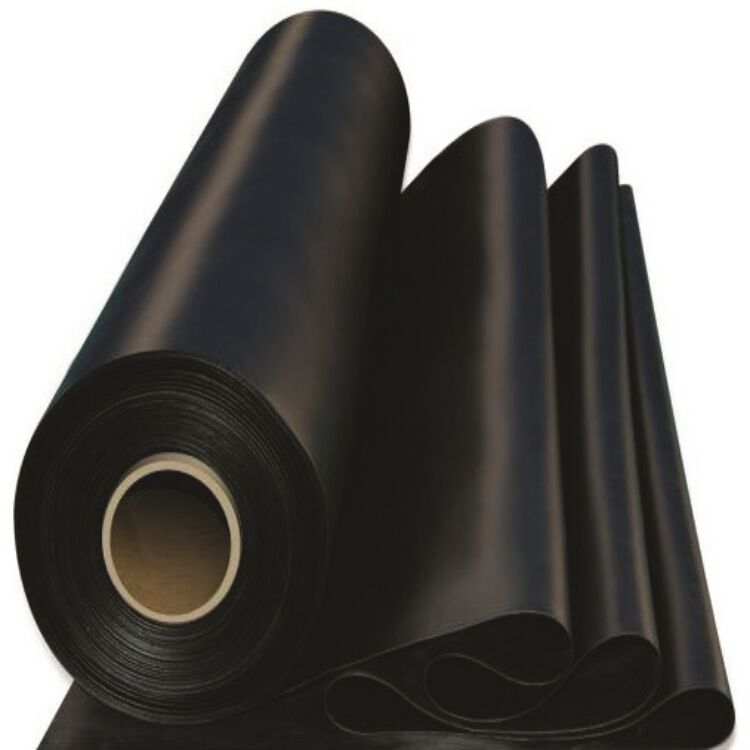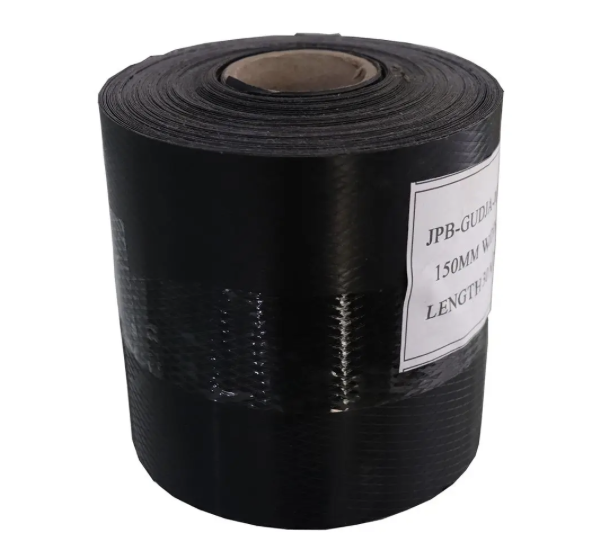주요 첨가제 기능들 방수 막 성능
화학적 상호작용 메커니즘
성분 요소들의 화학적 상호작용 메커니즘을 개선하는 데 중요한 역할을 하는 첨가제는 방수 막의 효율성과 내구성을 향상시키는 데 기여합니다. 이러한 화학물질은 막의 수명을 늘리기 위해 화학적 안정성과 다양한 반응에 대한 저항성을 증가시키는 데 중요한 역할을 합니다. 예를 들어 계면활성제는 막과 기재 간의 상호작용을 촉진함으로써 보다 우수한 접착력을 제공하는 핵심적인 역할을 수행합니다. 이러한 첨가제들은 성능을 현저히 향상시킬 수 있으며, 실제 시험 사례를 통해 더욱 긴 수명과 신뢰성을 입증한 바 있습니다. 예컨대, 일부 자재는 혹독한 환경에서도 더 오랜 시간 동안 작동하는 것으로 나타났습니다. 복잡한 화학적 조합은 방수막 시스템의 마모 저항성 및 효율성이 일관되게 향상될 수 있도록 보장하기 위해 필수적입니다.
공극 감소 전략
방수 막의 다공성 감소는 막의 차단 특성을 향상시키는 데 매우 중요하며, 이를 목적으로 사용할 수 있는 첨가제들이 개발되어 있다. 이러한 첨가제들은 막 재료 내 공간을 차지함으로써 개구 공극의 형성을 억제하고, 내수성을 향상시키는 등의 효과를 가진다. 다공성이 감소하면 막의 안정성이 증대되며, 이와 같은 특성은 일반적으로 투과도 감소 및 처리된 막의 작동 수명 증가를 입증하는 연구 데이터와 함께 나타나는 추가적인 이점을 갖는다. 그러나 비용이나 적용 복잡성과 같은 요소들이 재료 선택에 영향을 미칠 수도 있다. 따라서 특정 적용 분야에 대해 다공성을 줄이기 위한 가장 적절한 접근 방법을 결정하기 위해서는 이러한 요소들의 분석이 중요하다.
크랙 브리징 기술
크랙 브리징 메커니즘은 하중과 환경 변화 하에서 방수 막의 완전성에 있어 매우 중요합니다. 이 기술은 막 내부의 균열을 메우는 역할을 하는 첨가제를 포함하고 있으며, 이를 통해 방수막이 지속적으로 장벽 역할을 할 수 있도록 합니다. 크랙 브리징 첨가제는 특수한 성질을 가지고 있어서 운동 저항성 및 누수 방지 능력과 같은 이점을 제공합니다. 기술 보고서의 사례 연구에서는 크랙 브리징 첨가제를 적용함으로써 방수막의 성능이 크게 향상된 조건들을 보여주며, 효과적인 방수 시스템 구축 시 그 중요성이 강조됩니다.
성능 향상을 위한 첨가제 종류
결정형성제
결정체 형성제는 방수 막에서 구조물의 불침투성에 있어 중요합니다. 이러한 제품은 일반적으로 시멘트, 실리카 및 특수 화학물질로 구성되며, 수분과 결합하여 기공과 공극을 메우고 차단하는 결정체로 변합니다. 이 과정을 통해 막의 방수 저항성이 증가하므로 성능이 향상됩니다. Pazderka & Hájková(2016)의 연구에서는 결정체 혼화재를 사용한 콘크리트의 물 침투율이 장기적으로 최대 76%까지 감소하여 내구성과 방수성이 개선되었음을 입증하였습니다.
유연성 향상을 위한 가소제
가소제는 막의 유연성을 향상시켜 균열을 방지하고 내구성을 유지하는 데 필수적입니다. 이러한 첨가제들은 폴리머 매트릭스를 가소화하여 유연성과 이동성을 증가시킵니다. 종류에 따라(일반적으로 프탈레이트계 및 비프탈레이트계) 막의 물리적 특성에 다르게 영향을 미칩니다. 업계에서는 가소제를 사용함으로써 엘라스토머 특성과 같은 성능 지표가 개선된 사례들이 보고되고 있습니다. 이러한 탄성은 구조적 변화 또는 온도 변화가 빈번히 발생하는 환경에서 매우 중요합니다.
자외선 저항 안정제
자외선 저항성 안정제는 막의 자외선 분해에 대한 저항성을 확보하고 막의 무결성을 유지하기 위해 필요합니다. 이러한 동일한 안정제(및 자외선 흡수제, 방해 아민 광안정제 또는 HALS)는 자외선 노출로부터 보호하여 프로파일이 취성화되고 열화되는 것을 방지합니다. 일반적으로 자외선 저항성은 해당 막 제품의 요구 사항에 따라 결정되며, 이는 업계 표준을 기반으로 할 수 있습니다. 첨가제는 막의 수명을 크게 늘려 유지보수 비용을 절감하며, 제조업체에서 이를 주장하고 자료 성능 연구 결과로 뒷받침하는 경우가 많습니다.
항진균 화합물
추가적으로, 방수 막에는 생분해를 방지하고 이로 인해 소재의 수명을 유지하기 위해 항미생물 화합물을 포함해야 합니다. 이와 같은 살생물제인 이소티아졸리논 및 아졸계 살균제는 다양한 실험실 및 현장 시험을 통해 곰팡이 성장을 억제하는 효능이 입증되었습니다. 업계 시험에서도 이러한 화합물을 첨가함으로써 막의 수명을 획기적으로 연장할 수 있음을 보여주고 있으며, 수리 및 교체 주기를 줄임으로써 높은 투자 대비 수익을 제공합니다. 궁극적으로 이러한 첨가제들은 완전한 방수 응용 분야에서 필수적인 요소입니다.
첨가제를 통한 막 내구성 향상
정수압 저항
지하수 환경에서 방수막에 적용되는 경우, 수압 저항성은 필수적인 특성이다. 일부 첨가제는 막의 견고한 구조를 형성함으로써 고압 상황을 견딜 수 있게 하여 이 특성에 특히 좋은 영향을 미친다. 이러한 필름 및 막이 해당 환경에서 어떻게 작동하는지를 파악하기 위해서는 기압계를 활용하거나 프레임을 제어된 압력 챔버에 설치하는 등의 시험 방법이 필요하다. 예를 들어, 터널링 지지 구조물에서 실시한 시험에서는 누수 사례 감소와 막 시스템의 내구성 증대를 목적으로 수압 저항 첨가제가 성공적으로 적용되었다. 이는 현장 적용에서 수압 저항성을 강화하기 위해 이러한 요소들을 추가하는 것이 얼마나 중요한지를 보여준다.
열 사이클링 내성
온도 변화로 인해 열변화에 대한 우수한 내성을 갖는 것은 야외 방수 콜라겐 멤브레인에 있어 매우 중요합니다. 열 안정제와 같은 첨가제는 중합체 매트릭스를 변형시켜 팽창하거나 수축하더라도 파손되지 않도록 해줍니다. 이러한 개선 사항들은 취성 파손이나 균열 성장 파손에 대한 취약성으로 인한 고장 가능성을 더욱 줄이는 데 도움을 줍니다. 주요 시험 연구소의 성능 테스트 결과는 온도 보호 기능이 획기적으로 향상되었음을 보여주며, 이 첨가제들의 가치를 입증하고 있습니다. 최신 기술의 열 변성제로 처리된 멤브레인은 예를 들어 최대 40% 더 강력하며, 다양한 온도 범위에 노출되는 시스템에서 그 가치 있는 역할을 입증하고 있습니다.
기재 접착력 향상
막의 일반적인 성능과 수명을 위해서는 기재에 대한 접착력이 필수적입니다. 막의 손상 가능성을 최소화하고 시스템 신뢰성을 극대화하기 위해서는 강력한 접착력이 중요합니다. 이러한 조성으로 형성된 접착력은 예를 들어, 기재와 강한 화학 결합을 형성하는 쿠퍼링제와 같은 다른 첨가제를 사용함으로써 향상될 수 있습니다. 이러한 성분들이 콘크리트, 목재 또는 금속과 같은 기재에 막이 부착할 수 있도록 해줍니다. 현장 연구를 통해 접착력이 개선된 막은 혹독한 건설 환경에서도 우수한 성능과 더 긴 사용 수명을 보여주었으며, 이는 내구성 있는 방수 공법에서 이러한 첨가제의 중요성을 입증해 줍니다.
성능 테스트 및 검증 방법
EN 12390-8 수압 테스트
EN 12390-8은 방수막의 수압 저항성 시험을 위해 널리 채택된 표준입니다. 적용 범위 및 방법 사용 7.1 이 표준화된 방법은 개질제가 첨가된 재료의 효율성을 검증하는 데 필수적입니다. 이 방법은 통제된 수압 조건 하에서 시료를 시험하여 그 성능과 내구성을 평가합니다. 마지막 부분에서는 EN 12390-8을 준수하는 것이 얼마나 중요한지를 강조하고 있습니다. 이는 올바른 재료 선택이 이루어지도록 보장하며, 설계자들에게 고수압 상황에서 사용할 수 있는 레인스크린 막을 제안해 줍니다. 이러한 시험 결과는 사용할 재료 선택에 직접적인 영향을 미치며 강력한 밀폐 솔루션을 보장하는 데 도움이 됩니다.
장기 노후 시뮬레이션
방수 막의 내구성을 평가하기 위해서는 다양한 기후 조건에서의 장기 노출 시험이 필요하다. 이러한 시뮬레이션에는 자연 상태를 모방하기 위한 인공 노화 과정이 포함되는 경우가 많다. 첨가제가 이러한 조건에서 어떻게 작용하는지를 파악함으로써, 그들의 장기적인 특성과 신뢰성을 추정할 수 있다. 연구에 따르면 첨가제는 막의 내구성을 크게 향상시켜 재료가 수년간의 사용 기간 동안 온도 및 기후 변화에 견디도록 도와준다. 시뮬레이션 결과와 실제 성능 지표 간의 일치성은 제조사의 주장을 입증해주며, 이는 재료 효율성과 내구성을 보장할 수 있는 철저한 테스트의 필요성을 강조한다.
균열 전파 분석
멤브레인 수명 향상과 개선을 위해서는 균열 전파 역학에 대한 명확한 이해가 필요합니다. 균열 전파 분석을 통해 방수층 내 균열의 진행을 추적할 수 있습니다. 이러한 고급 시험 기술을 활용하면 첨가물이 균열 형성에 미치는 영향을 조사할 수 있습니다. 연구에서는 혁신적인 혼화재를 사용함으로써 균열 통제가 현저하게 개선될 수 있음이 입증되었습니다. 최신 연구들은 전략적 첨가물 블렌딩 접근법을 통한 일관된 폴링(poling)이 균열 성장을 효과적으로 억제하여 멤브레인의 서비스 수명을 연장하는 데 기여할 수 있음을 보여줍니다. 이러한 발견들은 보다 내구성이 뛰어난 방수 소재 개발을 위한 지속적인 연구 및 개발의 필요성을 한층 더 강조하고 있습니다.

응용 목적별 첨가물 조성
지반 이하 콘크리트 통합
지하 방수공사는 지하수와 토양의 습기를 지속적으로 견뎌야 하기 때문에 많은 어려움이 동반된다. 이러한 문제를 해결하기 위해 우리는 물의 침투를 효과적으로 방지할 수 있도록 특별히 설계된 콘크리트 첨가제를 사용한다. 이러한 첨가제를 사용하면 콘크리트의 다공성을 줄일 뿐만 아니라, 수중에서 방수층의 성능도 향상시킨다. 산업 현장 사례를 통해 결정형 방수 첨가제가 효과적으로 사용되고 있음을 입증할 수 있었다. 이러한 혼화제는 콘크리트 내부에 결정체를 생성하여 처리된 콘크리트의 밀도를 증가시키고 투수성을 감소시킨다. 이로 인해 콘크리트는 흡수율이 낮아지고 물의 침투에 대한 장벽 역할을 하게 된다. 이러한 조건이 충족될 경우, 지하 콘크리트 구조물의 강도 및 성능이 크게 향상된다.
지붕 막 최적화
지붕 시공에 사용되는 막재는 자외선 및 열과 같은 환경 요인에 지속적으로 노출되기 때문에 특정 성능 요구사항을 충족해야 한다. 첨가제 시스템은 이러한 막재가 혹독한 환경에서도 내구성과 효율성을 유지하는 데 중요한 역할을 한다. 연구를 통해 자외선 분해와 열변화에 특별히 제형된 첨가제가 막재 수명을 연장하는 데 기여할 수 있음이 입증되었다. 실제 실험을 통해 확인된 성능 수치들은 지붕 시스템에 고급 첨가제를 적용했을 때의 효과를 입증해주며, 이는 지붕 공사에 필요한 엄격한 방수 전략을 보다 개선하기 위해 적절한 제형을 선택해야 하는 필요성을 강조한다.
동적 접합부 보호
방수 시스템의 가동 조인트 신뢰성은 특히 유연성이 요구되는 지역에서 매우 중요하다. 조인트는 움직임과 스트레스를 받기 때문에 신뢰성을 유지하기 위해 조인트 특성을 향상시킬 수 있는 첨가제가 반드시 필요하다. 새로운 공식 혼합물들은 작동 및 압력 조건 하에서 조인트의 저항성과 유연성을 효과적으로 향상시킬 수 있음이 입증되었다. 연구를 통해 이러한 제형이 효율적임을 입증했으며, 실험적 테스트를 통해 조인트 기능의 상당한 개선이 관찰되었다. 가장 중요한 점은 고급 첨가제 사용이 조인트 고장 빈도 감소와 관련이 있다는 점으로, 이는 유연한 방수 시스템 내에서 동적 조인트 보호를 제공하는 데 있어 첨가제의 중요성을 강조한다.
자주 묻는 질문
방수 막에서 첨가제의 주요 기능은 무엇입니까?
주요 기능에는 화학적 안정성 향상, 공극도 감소, 균열 연결, 유연성 개선, 자외선 저항 제공, 곰팡이 성장 방지 및 기판에 대한 접착력 향상이 포함됩니다.
첨가제가 방수 막의 성능을 어떻게 향상시키나요?
첨가제는 화학 결합을 강화하고, 다공성을 줄이며, 유연성을 제공하고, 자외선 손상으로부터 보호하고, 곰팡이 성장을 억제하며, 접착력을 향상시키고, 환경 요소에 대한 저항성을 높이는 방식으로 성능을 개선합니다.
막 내 첨가제의 성능을 검증하는 테스트 방법은 무엇입니까?
성능은 EN 12390-8 수압 테스트, 장기 날씨 시뮬레이션 및 균열 전파 분석을 통해 검증됩니다.
특정 응용 분야별로 특화된 첨가제가 있나요?
네, 지반 콘크리트 통합, 지붕 막 최적화, 동적 조인트 보호와 같은 특정 응용 분야에 맞게 첨가제가 설계됩니다.

